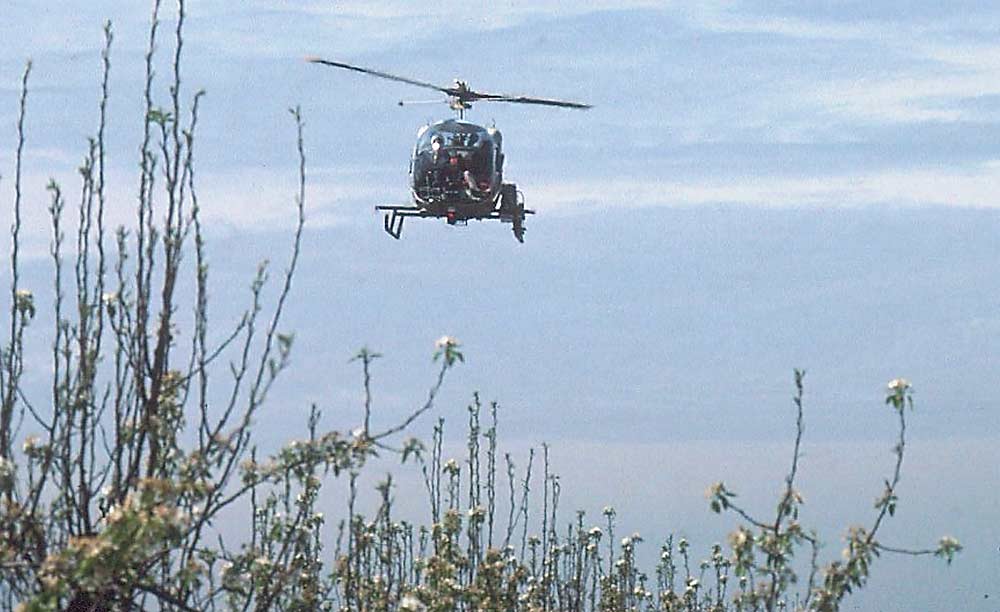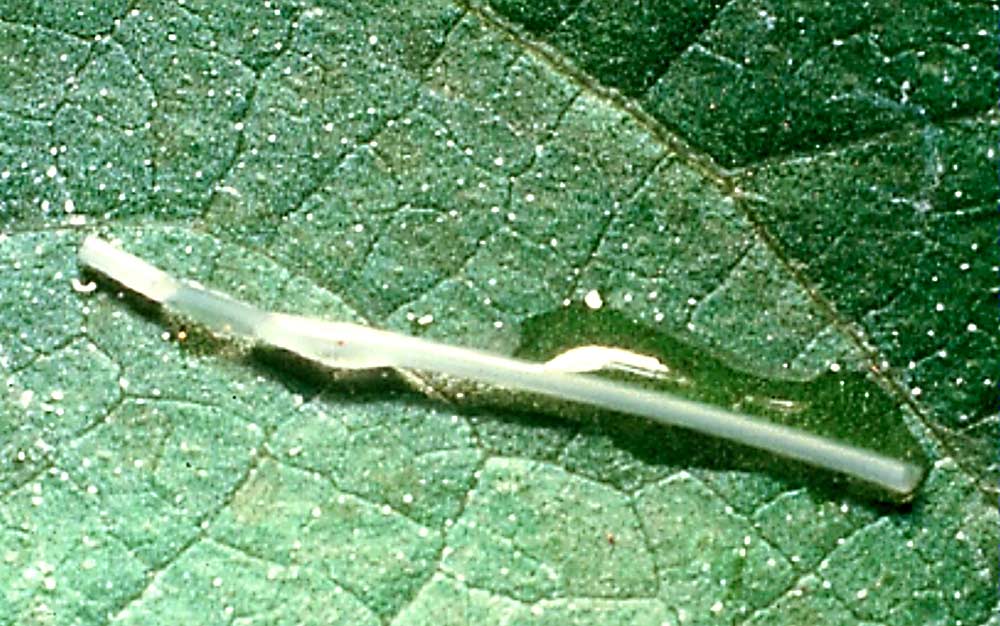
The Washington fruit industry is facing challenging times.

Back in December, at the Washington State Tree Fruit Association’s annual meeting program, I was tapped to deliver a Batjer presentation that would provide “insight on how we can mitigate the current challenges,” in the words of meeting chair Jordan Matson. In the face of that aspiration, it seemed reasonable to focus on a past mitigation effort which changed the face of orchard management in the region — so that we might use this example as a template for managing other challenges, now and in the future.
That story starts in the 1950s, when the West Coast agricultural research community was first reporting successes in integrating the use of pesticides with biologically based management tactics. Called integrated control or integrated pest management, one of its first tree fruit applications was developed by Stan Hoyt at Washington State University’s Wenatchee lab.
At that time, spider mite populations were out of control in many Pacific Northwest apple orchards, causing substantial damage. Based on Hoyt’s early research, WSU recommended reducing rates or eliminating nonselective, broad-spectrum pesticides for codling moth, which were toxic to spider mite predators. At these lower rates, codling moth was controlled, mite predators were conserved and damaging mite problems became a problem of the past.
Even at lower rates, those conventional codling moth control tools could be hugely disruptive in pear orchards. The use of nonselective insecticides for control of codling moth can lead to surges in pear psylla and spider mite populations, referred to as the “Bermuda Triangle” of pear pest management.
In 1979, Hal Moffitt from the U.S. Department of Agriculture’s Agricultural Research Service lab in Yakima, Washington, and Pete Westigard of Oregon State University conducted the first test of codling moth mating disruption in pear orchards with Jud Parsons at Hillcrest Orchards in Medford, Oregon. The pheromone delivery system — pheromone-infused tubes dropped from a helicopter — wasn’t the greatest, but the trial demonstrated significant suppression of codling moth trap catch.

By 1985, an improved dispenser system had emerged with the commercial introduction of the trademarked Isomate poly tube for control of oriental fruit moth in work done by Dick Rice of the University of California, Davis.
Building on this early work, Isomate-C for codling moth control was introduced in 1986. Extensive experimental use trials over a five-year period in Central Washington by Jay Brunner and Larry Gut at Washington State University and Frank Howell at the USDA-ARS lab in Yakima, working closely with the consulting firm Ron Britt and Associates, showed that codling moth mating disruption worked.
This outcome was especially encouraging to the roughly 100 organic growers who, in the 1980s, grew apples and pears on about 1,700 acres using less-effective botanical and microbial insecticides for codling moth control. This promise of more effective control of codling moth without reliance on conventional insecticides changed how growers viewed the potential for organic production.
Another driving factor in the early adoption of mating disruption and the expansion of organic tree fruit production was changing consumer attitudes following the negative food safety publicity in the wake of the 1989 Alar crisis. However, while the early successes of mating disruption provided hope for an expansion in organic apple and pear acreage, dispenser technology needed improvement and implementation costs were high. But the promise of the new technology was unmistakable, with both organic and conventional growers urging more research to improve dispensers and reduce application costs.
Driven by this interest, in 1995 the codling moth areawide management project kicked off with about $5 million in funding provided by USDA-ARS over nine years to test areawide codling moth mating disruption at sites in California, Oregon and Washington. In addition to those identified earlier, others involved from the Pacific Northwest were Alan Knight, Brad Higbee and Carrol Calkins of the USDA-ARS Yakima-area research laboratory in Wapato; Dave Epstein at WSU, then, and now the vice president of scientific affairs at the Northwest Horticultural Council; Rick Hilton at OSU in Medford, and Jim Krysan, who had been the USDA-ARS research leader in Wapato but in the early 1990s moved to the ARS National Program staff in Washington, D.C., where he played a key role in organizing the financial support for the project.
As noted with Jud Parsons’ cooperation in the 1979 Oregon work, growers had been involved in the research since the start. In 1995, a leading Washington grower, Gaylord Enbom of Wapato, said about the areawide project: “We intend to (continue to) cooperate to make sure this is a fair test of the system because we have too much at stake not to. While we don’t know that it will work, we hope it does.” In support of this grassroots interest, from the 1980s to the present day, the Washington Tree Fruit Research Commission invested over $2.1 million of grower funds in codling moth mating disruption research.
The need for codling moth control alternatives became palpable when the Food Quality Protection Act (FQPA) passed Congress in 1996. FQPA changed the standards by which pesticide safety was assessed and encouraged registration of safer alternatives. Organophosphates and carbamates, the tree fruit industry’s standard control tools for many pests, including codling moth, were among the first active ingredient classes targeted by FQPA, and by the early 2010s they were almost universally restricted from use in tree fruit production systems — and mating disruption became the industry standard.
No matter how well codling moth mating disruption might be working now, expecting a single pest management tactic to last forever is usually a recipe for disappointment. However, if there was a need to regroup to address the same or a similar series of challenges in codling moth management, finding team members will not be as easy — given ongoing losses of codling moth research positions along with pending retirements.
It is essential the Pacific Northwest focus on having a robust and geographically diverse group of scientists with the appropriate mix of experience, technical skills and outreach know-how to partner with industry in taking the next step, which will inevitably be needed.
Likely that is the key to addressing any critical challenges, regardless of whether they are in our face now or threaten other key components of the production system in the future.
—by Mike Willett
This article was excerpted from Mike Willett’s Batjer Lecture at the 2021 Annual Meeting of the Washington State Tree Fruit Association.






Leave A Comment